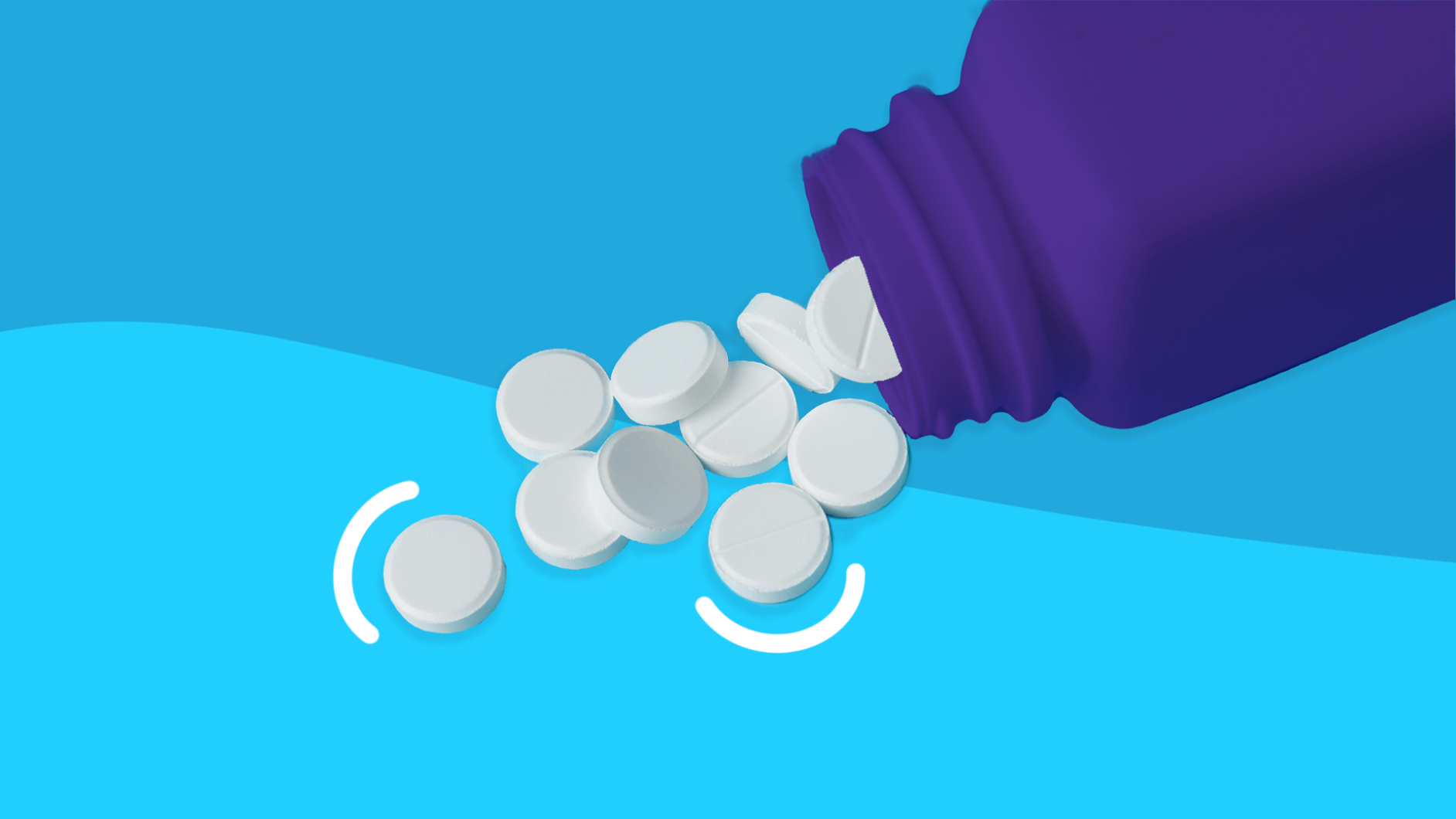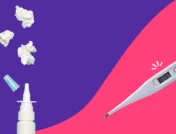Many people take niacin to help increase high-density lipoprotein (HDL) cholesterol and decrease low-density lipoprotein (LDL) cholesterol in the bloodstream. Some of them notice what has come to be called a “niacin flush,” which involves itchiness, redness, or warmth throughout their face, arms, and chest. It can be upsetting to experience this uncomfortable sensation, but it is a normal side effect of niacin. Alone, it is not dangerous or a sign of a serious health condition, and there are a few ways to minimize the effect of the supplement.
What is niacin flush?
Niacin, also known as vitamin B3, plays an important role in nutrition. It is present in some foods, but it is also added to foods like fortified cereals. Niacin is also available as a dietary supplement. Your recommended daily amount of niacin varies based on your age, gender, and health condition. Adult men, adult women, pregnant people, and children all need differing amounts. If you are wondering how much niacin you need and how to get it, speak with your healthcare provider. Foods containing niacin include:
- Red meat
- Poultry
- Fish
- Brown rice
- Fortified cereals and breads
- Nuts
- Seeds
- Legumes
- Bananas
Because many people eat foods on this list and get enough niacin through diet, niacin deficiency is rare. Niacin supplements contain forms of niacin called nicotinic acid or nicotinamide. They often contain large doses of niacin, amounting to more than the body needs. This oversupply of niacin leads to a niacin flush, a reddening or warmth in the face, chest, and upper body.
Usually, people take more than the recommended daily amount of niacin in the form of supplements, not for dietary reasons, but to reduce their LDL, also known as “bad” cholesterol levels, and hopefully prevent heart disease. Ironically, many foods that contain niacin, such as red meat, are also linked with high HDL cholesterol, the “good” cholesterol. You should only take niacin or any other supplements under medical supervision.
What causes niacin flush?
Taking high doses of niacin causes niacin flush. Many physicians prescribe niacin to help lower cholesterol. The prescription niacin dose needed to improve cholesterol levels is greater than what is often needed for nutritional purposes, and the excess niacin in the body causes the flush.
“Niacin has a propensity for causing a reaction in which the blood vessels in the body dilate,” says Yu-Ming Ni, MD, board-certified cardiologist and lipidologist at MemorialCare Heart and Vascular Institute at Orange Coast Medical Center in Fountain Valley, California. When the body experiences this dilation due to the use of niacin, blood more rapidly flows through the body, and the resulting increase in blood flow creates a reddening of the affected body parts.
Niacin flush symptoms
The symptoms of niacin flush as a result of high doses of niacin vary from person to person, but they usually have a few aspects in common. “During a niacin flush, the skin of the body becomes flush, especially on the face, arms, and chest. The flush is usually described as reddening, warmth, and itchiness of the skin,” says Karishma Patwa, MD, cardiologist at Manhattan Cardiology in New York City.
Dr. Ni adds that other symptoms include “very reddened skin, a little bit light-headed and dizzy, and nausea.” He says it is especially pronounced in warm temperatures or when exercising, and that he has had several patients faint in the shower while taking niacin due to low blood pressure. The reason for this is that the body is already dilating during these warm situations, and the additional dilation from niacin is too much for the body to handle without additional symptoms.
“The flush comes on quickly and can last over an hour,” Dr. Patwa says. “Once you know it’s the niacin flush, you don’t need to panic. Just be patient, and it will subside.”
Hopefully, you won’t have this side effect the entire time you’re on the medication. “As time goes on, your body will get used to the niacin, and episodes of flushing will become less frequent,” Dr. Patwa says. The good news is that, while you may experience the niacin flush right after you start taking it, you will likely not experience this temporary side effect with long-term use.
Is niacin flush dangerous?
Flushing can seem like a sign of adverse side effects from the medication. However, the flush itself isn’t harmful, nor is it a sign of an allergic reaction or serious health condition.
The fact that the niacin flush isn’t dangerous doesn’t mean people should necessarily carry on as if nothing is happening to their bodies. “I would certainly just be careful not to over-exert yourself when this is happening,” Dr. Ni says. He warns patients to remain still during a niacin flush since it can cause blood pressure to drop, and some people may faint.
How to prevent niacin flush
Unfortunately, if you experience niacin flush, there’s nothing to prevent it besides stopping the usage of niacin. “There’s nothing you really have to do or take to make it better. You just have to deal with it,” Dr. Ni says. Since it goes away on its own, there’s no need to take action to stop the flush.
There are different types of niacin medications, including flush-free or no-flush niacin, but Dr. Ni warns patients to be skeptical since there isn’t a formulation on the market that both works to help the body and does not contain any risk of flushing.
While you can’t prevent the flush altogether, your healthcare provider may be able to prescribe forms of niacin that lessen the effect. “Some niacin supplements have been formulated as slow-release capsules, which help reduce the likelihood of niacin flush,” Dr. Patwa says.
“One called Slo-Niacin has a slower release, so the flushing is less pronounced. That one does have a chemical benefit,” Dr. Ni says, unlike the “no-flush” formulations.
Additionally, taking aspirin before niacin has been shown to reduce the effects of niacin flush. Talk to your healthcare provider about implementing aspirin into your supplement routine.
When to see a doctor for niacin flush
Even though a niacin flush is a common side effect of niacin and isn’t dangerous on its own, always report side effects to your healthcare provider to get medical advice. Certainly bring it up if it’s causing great discomfort or if you feel at risk for fainting due to your environment or activity level.
“Usually, it will go away on its own; however, it’s a good idea to visit a healthcare provider if the flush is persistent. That may mean something else is going on,” Dr. Patwa says. While your flushing might be from niacin, you may also have another medical condition. Other health conditions that cause flushing include:
- Menopause, which can cause hot flashes
- Rosacea, which is affiliated with a reddening of the face
- Fifth’s disease, which is marked by a “slapped face” look
- Anxiety, which can cause blushing or flushing
- Panic disorder, which is affiliated with dilation and flushing
- Scarlet fever, which is marked by a rash after contracting strep throat
- Infections, which can come with rash or fever
- Hyperthyroidism, which can speed up the heart rate, causing dilation
- Sunburn, which reddens the skin
- Cluster headaches, which have a flushing effect along with pain
- Autonomic hyperreflexia, a serious condition that may include flushing
- Viruses, which can cause rash or fever
- Cushing syndrome, which causes high blood pressure and red marks on the skin
- Allergic reactions, which may include flushing or a rash
- Carcinoid syndrome, which involves tumors that can cause flushing
Untreated, many of these can be serious conditions, so always bring up flushing to your doctor, even if you think it’s just a result of the niacin. They may want to examine you, get more information about your symptoms, and run tests to make sure that your flushing is only a side effect of niacin. Always give your healthcare provider your full health history and prescription medication list, including any over-the-counter medications and supplements, as many have drug interactions.
Niacin alternatives
For many reasons, including a lack of beneficial effects, medical professionals may not want to prescribe niacin and will rely on other methods to reduce cholesterol. Researchers disagree on whether niacin provides any added benefits when taken with statins, and some research has correlated using the two together to an increased stroke risk.
Instead of niacin, Dr. Ni says you should look at “the reason for prescribing niacin.” If it’s for lowering LDL levels, there are other ways to lower cholesterol. He recommends talking to your healthcare provider about “the risk-benefit profile of niacin” in order to decide whether it’s worth it.
Diet and exercise may be better options for lowering cholesterol, but if those options don’t work, Dr. Ni recommends fish oil. He also prescribes medications called fibrates, such as gemfibrozil and fenofibrate.
Sources
- Niacin: A fact sheet for health professionals, National Institutes of Health Office of Dietary Supplements (2022)
- Niacin – vitamin B3, Harvard T.H. Chan School of Public Health (2023)
- Skin blushing/flushing, Medline Plus (2023)
- Niacin + a statin does not add up to benefit, Harvard Health Publishing (2012)
- Improving your cholesterol with diet and exercise, American Family Physician (2010)











